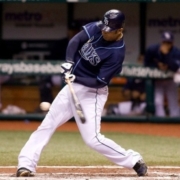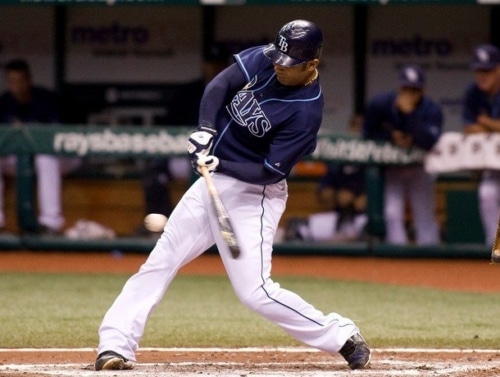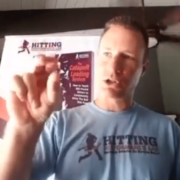“Best Drill For Being Out In Front All The Time. Always Makes Contact Way Out In Front, Weak Hits & No Power”…
Here’s the Hitting Jam Session Interview Collection with Perry Husband:
- Why You Should Not Teach Hitters To Hit Homers?
- [YOU ARE HERE] What’s The Biggest Mistake Coaches Make In Boosting Ball Exit Speeds
- How To Make Teaching Proper Weight Shift In Swing More Understandable To Hitter
- Teach: How To STOP Hitting Excess Of Ground-balls & Fly-balls
- 5,000 Swing Experiments Validate Locked Lead Arm Is Superior To Bent
- Overload Bat Training: Hitting Has To Work Butt Off To Resist “Casting”
Here’s what we discuss in this episode:
- Short Intro’s

- Most effective ways to boost BES
- How to know “who/what” to follow – by doing swing experiments
- Swing eval at home & future case study Jam Sessions
- Q/A
You can also CLICK HERE to view the original video and comments from the Jam Session on Facebook.
Show Notes
- At about the 30-sec mark, the whole point of these Jam Sessions, equipping coaches to do petri dish evaluations at home collecting data, bringing us this data, and we can help coaches get their hitters better using real data and human movement principles validated by real Science.
- At about 5-minute, 30-sec mark, Perry answers what he thinks is the biggest mistake coaches make in boosting ball exit speed, watching videos on YouTube, the lead arm shape (bend or straighten?), locking out beforehand causes a chain reaction that stretches out rubber bands, going from bent to straight right at impact doesn’t optimally stretch out rubber, not most important thing – is a piece of the machine, a bunch of things pieced together.
- At about 8-minute mark, addressing why a barred front arm gets a bad rap on causing “longer” swings, correlation DOES NOT equal causation in this case, a consistent front arm shape equals consistency at bat-ball contact, Perry talks about “laser” experiment comparing a bent lead arm versus a barred out front arm (about 11-min mark), interestingly laser was all over with bent arm versus closer to “line” with straight front arm, getting barrel in line and keeping it there, with front arm bend there’s too much free play, at least twice as good arm bar versus bend when it comes to consistency.
- At about 13-minute mark, talk about the main benefits to a front arm bar, longer levers multiply force at the end of the lever, a longer swing IS NOT about a bent or straight front arm – it’s about when the barrel leaves the rear shoulder, end loaded heavy bats are fantastic for training barrel path for different pitch depths, look at hitters hitting 95-mph inside – they use shorter more compact swings (the barrel leaves the shoulder later).
- At about the 17-minute mark, Perry shares another experiment where he used a ball attached to surgical tubing attached to an anchor, pulling ball back 8-feet, then letting go and measuring speed, then stretching the tubing back further, speed increases and ball hits wall sooner than the shorter pull back, Perry explains shortening front arm can help get on time but hitter gives up hard ball contact (70% their 1-arm max).
- At about 20-minute, 30-sec mark, talking about when you’re teaching hitters, what is your hitting “operating system”? Is your goal for hitters to increase hard ball contact? Is it to reduce strikeouts? Based on your hitting operating system, you’ll choose specific hitting mechanics that organize that support the specific operating system, barrel path will change based on pitch depth, swing to match timing – reactionary hitting, the other side of the coin is to max out 100% on-time, 100% swing effective.
- At about 25-minute, 30-sec mark, how do we know who to follow or what to follow, Perry goes over swing evaluation you can do at home (CLICK HERE for a PDF spelling this out), build a target – Home Depot tarp, 2-foot diameter circle, cut hole in middle of circle (1-foot) creating donut, bottom of target is inline with bottom of ball on tee, target is 10-feet in front of hitter, hit top of target roughly 20-degree, middle roughly 10-degrees, measure ball exit speeds, give points: 1-point for hitting it through the middle, hits outside ring 0.5-point, miss target = 0. Out of ten swings good is 4/10 (or .400). If not at .400, then something is missing. Average ball exit speed should be around 90% of your 1-rep. max. Plot where the misses are, and number which hits they were. (Ask Perry for blank diagram on this). Measuring ball exit speed with Zepp
, SwingTracker
, BlastMotion
, PocketRadar
, Bushnell Radar gun
,
- At about 33-minute mark, Perry talks about use of imagination or visualization, physical changes are tough under competitive pressures of a game, practicing your game swing, changing intent changes the swing, i.e. hitter hitting pop ups, changing intent to hit a low screaming line drive helps brain organize body to change the swing without thinking internal cues.
- At about 39-minute mark, imagine a bendy tube attaching the pitcher’s release to contact, we want the hitter to hit the ball back through tube the pitch came from, external cues versus internal cues, getting a ballpark of what the hitter is doing by setting hitter up on a tee that is positioned as a middle middle location, if hitter is pulling all the time or going other way too much or popping ball up too much or hitting a lot of ground-balls, along with ball exit speed measurements.
- At about 42-minute mark, Perry asks me about the springy fascia, the idea of a “rubber suit” creating stretch in the suit as you twist up, springy ‘X’ pattern – ‘X’ on chest and back, compression and tension forces, Granite has a high compression rate but has a terrible tension rate, Boom crane tension forces can be found in the cable holding the wrecking ball, body uses both compression and tension forces, hitter’s front shoulder comes in and down (shortening chest leg of the ‘X’), other leg of the ‘X’ on the chest lengthens, on the backside – the corresponding legs of the ‘X’ does the opposite, Scapula Row? Biggest mistake coaches make is forcing hitters to keep front shoulder straight instead of protracting the front Scapula, Arm barring front arm helps with ‘showing numbers’ AND ‘hiding hands’.
- At about 60-minute mark, hitter lets go of bat hits 370-foot homer, while holding on hits ball 480-feet, pitch velocity and location were same, timing was a little different, Physicist Dr. Alan Nathan says once bat is in motion hitter doesn’t have to hold onto bat at impact – force is already there, locking out at impact helps transfer energy better, look at all the data on batted balls that go the farthest – they look the same, arm is locked out, test hitting a fully inflated basketball exit speed should be around 80% of 1-rep max – if not then losing swing effectiveness, Newtonian Physics v. non-Newtonian Physics, Physics is limited to Physics (external forces), Bio-Mechanics is limited to Biomechanics, etc.
- About about 57-minute mark, Perry answers question: “Best drill for being out in front all the time, always makes contact way out in front, weak hits and no power?” Every pitch location has one ideal contact point, make swing in slow motion to find what’s optimal, body is reaching too much, one drill: the “Riiiiiight-Now!” Drill (“Right” is at release, where impact is the “now”).
- HittingIsAGuess.com @EVPerryHusband, special offer for any of his online courses use: EV25 discount code
- Special offer from me the FREE print Catapult Loading System Book, just pay $8.95 Shipping & Handling (retails on Amazon for $19.97): https://www.truthaboutexplosiverotationalpower.com/pl/60039







